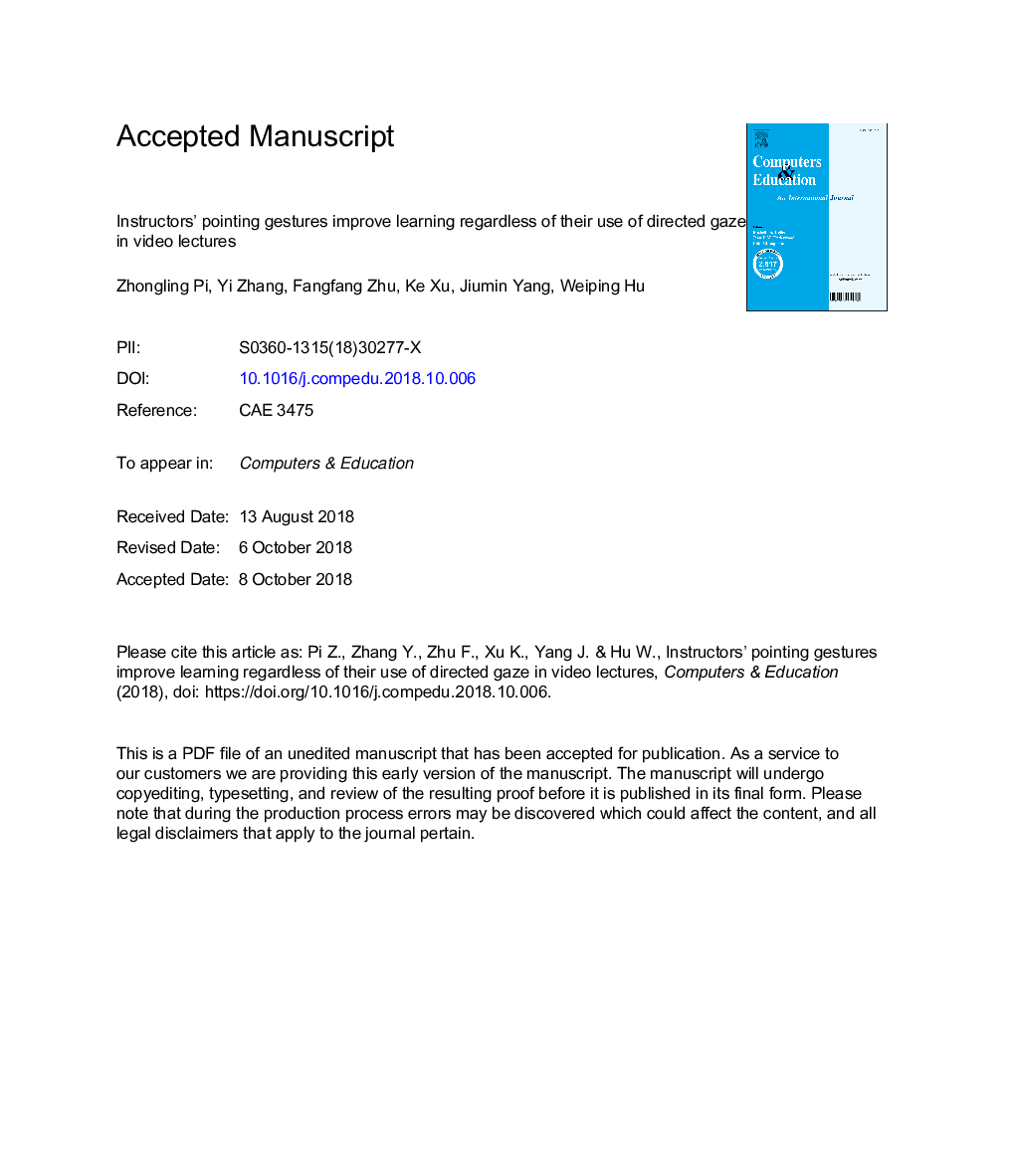| Article ID | Journal | Published Year | Pages | File Type |
|---|---|---|---|---|
| 11263422 | Computers & Education | 2019 | 24 Pages |
Abstract
Empirical research to date has not distinguished the effects of the instructor's pointing gestures from directed gaze in video lectures. This study tested the hypothesis that the pointing gesture is superior to directed gaze in enhancing video lecture learning. Participants (nâ¯=â¯120) watched one of four types of video lecture in which the instructor either (a) looked straight into the camera with no gaze shift and without pointing gesture; (b) made occasional gaze shifts and without pointing gesture; (c) looked straight into the camera with no gaze shift and pointed to the relevant areas of the slide; or (d) made occasional gaze shifts accompanied by pointing gestures towards the slides. ANOVAs found that students in the conditions that included the instructor's pointing gesture showed better learning performance, more efficient visual search, and greater attention to the learning content that the instructor was referring to, regardless of her use of directed gaze. The implication for education is that instructors should use pointing gestures, with or without directed gaze, to guide students' attention and improve their learning in video lectures.
Keywords
Related Topics
Social Sciences and Humanities
Social Sciences
Education
Authors
Zhongling Pi, Yi Zhang, Fangfang Zhu, Ke Xu, Jiumin Yang, Weiping Hu,
